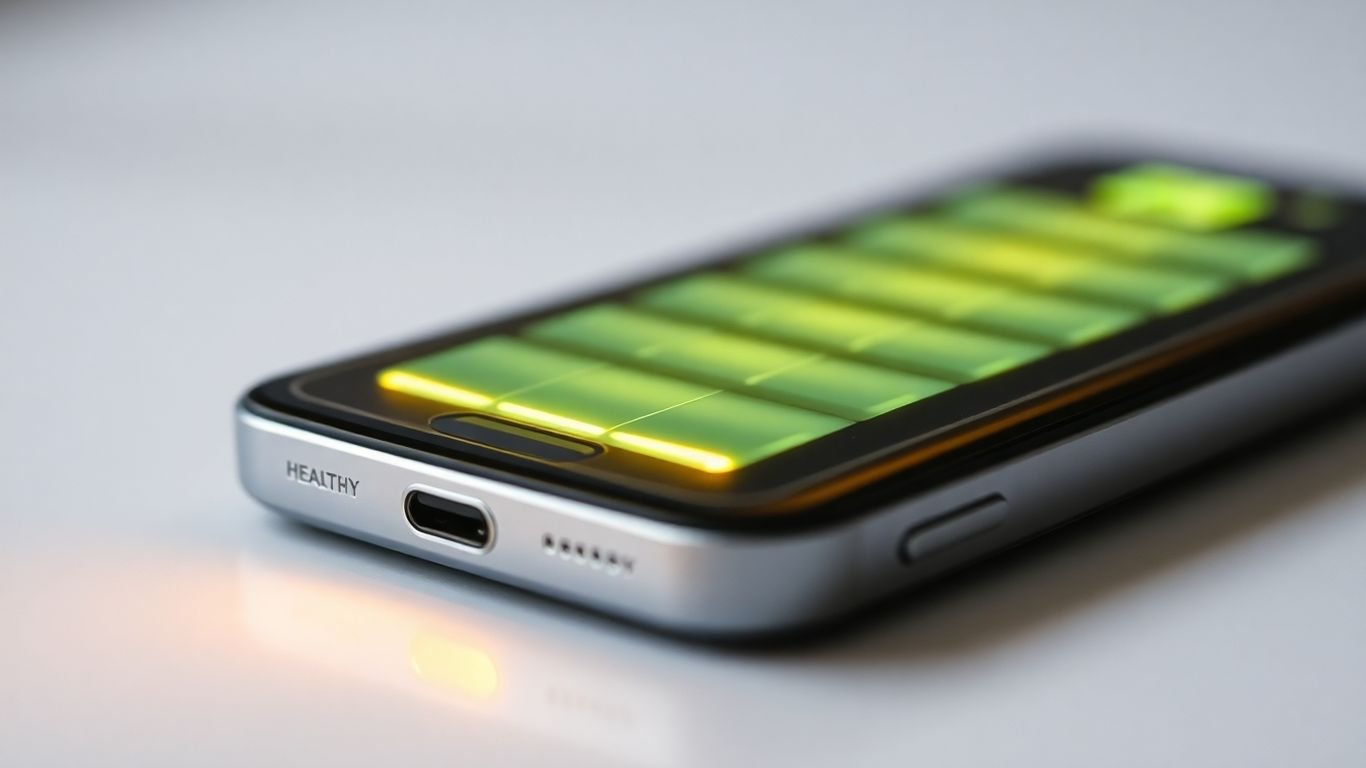What Is a Good Battery Cycle Count? A Complete Guide

Ever wonder why your phone or laptop battery just doesn’t seem to hold a charge like it used to? It’s probably got something to do with its battery cycle count. This number is basically a tally of how many times your battery has been fully used and recharged. It’s a pretty good indicator of how much life your battery has left. Lots of people don’t even know about it, or why it’s even important. This guide is going to break down what a battery cycle count really means, how to check it, and what you can do to make your battery last longer. We’ll also talk about when it’s probably time to just get a new battery.
Key Takeaways
- A battery cycle happens when you use 100% of its charge, whether that’s all at once or spread over a few days. Charging it multiple times a day doesn’t automatically mean multiple cycles.
- Your battery’s cycle count shows how much it’s been used, while battery health tells you how much of its original charging ability is left. They’re related, but different.
- For most devices, around 500 battery cycles is when the battery starts to noticeably degrade, often holding only about 80% of its original capacity.
- How you charge and discharge your battery matters. Avoiding full drains and extreme temperatures can help extend its life.
- If your device dies quickly, slows down, or shows a ‘Service’ warning for the battery, it might be time for a replacement, especially if your cycle count is high.
Understanding Battery Cycle Count

So, what exactly is this ‘battery cycle count’ everyone talks about? It sounds technical, but it’s actually pretty straightforward once you get the hang of it. Think of it as a tally mark for how many times your device’s battery has been fully used up and then recharged. It’s not about how many times you plug it in, but rather how much of its total capacity has been consumed.
What Constitutes A Full Battery Cycle?
A full battery cycle is completed when you’ve used up 100% of your battery’s capacity. This doesn’t mean you have to drain it from 100% to 0% in one go. For instance, if you use 50% of your battery today and then charge it up, and then use another 50% tomorrow, that counts as one full cycle. It’s all about the total usage adding up to 100%.
Here’s a quick breakdown:
- Using 75% of your battery, then charging it back up.
- Using another 25% the next day.
- This combination equals one full charge cycle.
It’s a cumulative measure. So, even if you charge your phone multiple times a day, the cycle count only goes up when the total percentage of battery used reaches 100%.
Battery Cycle Count Versus Battery Health
It’s easy to mix up cycle count with battery health, but they’re different things. Your cycle count is a number that tells you how many full charges your battery has gone through. Battery health, on the other hand, is a measure of how much of your battery’s original capacity is still available. So, you could have a low cycle count but still have a battery that’s not performing at its best if you haven’t taken good care of it. Conversely, a higher cycle count doesn’t automatically mean your battery is terrible, especially if it’s still holding a good percentage of its original capacity. You can check your battery health in your device’s settings, usually under a ‘Battery Health’ section. This gives you a percentage of your battery’s maximum capacity compared to when it was new. For example, an iPhone battery is typically rated for up to 500 full cycles before it’s expected to hold around 80% of its original capacity. Newer models, like the iPhone 15, are rated for up to 1000 cycles. You can find out more about iPhone battery cycle count.
How A Battery Cycle Is Measured
Devices measure battery cycles by tracking the cumulative discharge. When your battery’s charge level drops by a certain amount, it’s logged. For example, discharging from 100% to 50% counts as 50% of a cycle. If you then charge it back up and later discharge it from 100% to 75%, that’s another 25% of a cycle. Once the total discharged amount reaches 100%, the cycle count increases by one. This system allows for a more accurate representation of battery usage over time, regardless of how many times you plug and unplug your device. Some devices might show this information directly in their settings, while others might require you to dig a bit deeper through analytics data or connect to a computer.
The Importance Of Your Battery Cycle
So, why should you even care about your battery’s cycle count? It’s not just some random number manufacturers put there to confuse you. This number is a pretty good indicator of how much life your battery has left in it. Think of it like the odometer on a car; it tells you how much the battery has been used. Knowing this helps you understand when your device might start acting up or when it’s time to think about getting a new one. It’s all about managing expectations and staying ahead of potential problems.
Tracking Progress Towards Battery Degradation
Every time you charge and discharge your battery, it’s like taking a step closer to its eventual end. The cycle count is how we measure those steps. For most modern devices, especially smartphones and laptops, manufacturers usually design the batteries to last for a certain number of cycles before their performance drops noticeably. For example, many lithium-ion batteries are rated for around 500 to 1000 cycles. Once you hit that mark, you might notice your battery doesn’t hold a charge as long as it used to. It’s a gradual process, but the cycle count gives you a way to track that progress.
Identifying Reasons For Faster Battery Drain
If your phone or laptop seems to be dying faster than usual, your battery’s cycle count could be a big clue. As batteries age and go through more cycles, their maximum capacity decreases. This means they can’t hold as much charge as they did when they were new. So, even if your device’s software is perfectly fine, an older battery with a high cycle count will naturally drain faster. It’s a common reason for that frustrating feeling of constantly needing to find a power outlet.
Determining When A Battery Replacement Is Due
So, when is it time to actually swap out that battery? Your cycle count is a major factor. While there’s no single magic number that applies to every device, manufacturers often provide guidelines. For instance, Apple suggests that a battery is considered significantly degraded when it reaches a certain cycle count and its maximum capacity falls below 80%. If your device is running slower or not lasting through the day, checking the cycle count can help you decide if a battery replacement is the right move. It’s better to replace it before your device becomes unusable.
Here’s a general idea:
- Low Cycle Count (Under 200): Your battery is likely in great shape.
- Moderate Cycle Count (200-500): Expect some normal wear, but still good performance.
- High Cycle Count (500+): You might start noticing reduced battery life and performance.
The cycle count is a useful metric, but it’s not the only thing to consider. Battery health, which measures the current capacity compared to when it was new, is also super important. Sometimes, a battery with a high cycle count can still perform well if it’s been well-maintained, and vice-versa.
Assessing A Good Battery Cycle Count
So, you’ve been hearing about battery cycle counts and wondering what’s actually a ‘good’ number. It’s not as simple as saying ‘under X is great’ because a lot depends on the device itself and how you’ve been using it. Think of it like mileage on a car – a low number is generally better, but a car driven mostly on highways might still be in great shape with higher mileage than one that’s been stuck in city traffic its whole life.
Interpreting Cycle Count For Newer Devices
For newer gadgets, especially those with batteries designed for longer lifespans, a lower cycle count is definitely a good sign. Manufacturers are starting to rate batteries for more cycles. For instance, Apple now rates the iPhone 15 and later models for up to 1000 full cycles. This means you can expect the battery to retain around 80% of its original capacity even after a thousand charges and discharges. So, if your relatively new phone is showing, say, under 200 cycles, it’s still pretty fresh and likely performing close to its peak. It’s a good indicator that the battery hasn’t been stressed much yet.
Understanding Cycle Count For Older Devices
When we talk about older devices, the context shifts a bit. Many older phones, like iPhones 14 and earlier, were rated for about 500 full cycles. If you have an older phone and its cycle count is creeping up past 400 or 500, it’s not necessarily a disaster, but it does mean the battery is getting on in years. You might start noticing that it doesn’t hold a charge as long as it used to, even if the battery health percentage still looks okay. It’s a signal to start thinking about potential replacement down the line. Checking your battery health is a good idea, and you can find this information in your device’s settings. For iPhones, you’d go to Settings > Battery > Battery Health & Charging.
What A 500 Cycle Count Signifies
A cycle count of 500 is often seen as a benchmark, especially for devices rated for that many cycles. When a battery hits around 500 cycles, it’s typically expected to be holding about 80% of its original capacity. This is often the point where manufacturers, like Apple, start recommending a battery replacement. It doesn’t mean the battery is dead or useless, but its performance will likely be noticeably diminished. You might experience quicker drain, and the device might even slow down a bit to prevent unexpected shutdowns. So, a 500-cycle count generally signifies that the battery has reached a point of significant, but not necessarily complete, degradation. It’s a good time to assess if the performance is still meeting your needs or if it’s time to consider a new battery.
It’s important to remember that cycle count is just one piece of the puzzle when it comes to battery health. How you charge your device, the temperatures it’s exposed to, and even the quality of the battery itself all play a role in how long it lasts. Don’t get too fixated on the number alone; consider it alongside other indicators of battery performance.
Here’s a general idea of what cycle counts might mean:
- Under 200 cycles: Your battery is relatively new and should be performing at its best.
- 200-400 cycles: Typical for a device that’s 1-2 years old with moderate use. Performance is likely still good.
- 400-600 cycles: The battery is showing signs of age. You might notice reduced battery life.
- 600+ cycles: For devices rated at 500 cycles, this count suggests the battery is well past its prime and likely needs replacement soon.
Keep in mind that these are just general guidelines. Some batteries might last longer, and others might degrade faster depending on various factors.
Factors Influencing Battery Cycle Life
So, you’ve got this battery in your phone, laptop, or maybe even your electric scooter, and you’re wondering what makes it tick for so long, or sometimes, not so long. It’s not just magic, you know. A bunch of things play a role in how many times your battery can go through its charge and discharge routine before it starts to feel its age. Think of it like this: how you treat your battery really matters.
The Impact Of Deep Discharge Habits
This is a big one. When you let your battery drain all the way down to zero percent, or close to it, repeatedly, you’re putting a lot of stress on it. It’s like asking someone to run a marathon every single day without any rest. Over time, this deep discharge habit can really shorten the battery’s overall lifespan. It’s generally better to keep your battery topped up a bit more often. Instead of waiting for it to hit red, try plugging it in when it gets down to, say, 20% or 30%. These shallower discharges are much kinder to the battery’s internal chemistry.
How Charge And Discharge Rates Affect Longevity
How fast you charge and discharge your battery also makes a difference. When you use a super-fast charger, or when your device is working really hard and draining the battery quickly, it generates more heat. Heat is not a battery’s best friend. This extra heat and the rapid flow of energy can cause wear and tear inside the battery. So, while fast charging is convenient, using a standard charger sometimes, especially overnight, can be better for the long-term health of your battery. Similarly, if your device is constantly running demanding apps that drain the battery fast, that’s also contributing to quicker wear.
The Role Of Battery Quality And Materials
Not all batteries are created equal, plain and simple. The quality of the battery itself, from the materials used to how it was manufactured, plays a huge part. Some batteries are just built better, using higher-grade components that can withstand more cycles. You’ll often see different types of lithium-ion batteries, for example, each with its own expected cycle life. A battery made with cheaper materials or a less precise manufacturing process might not last as long, even if you treat it perfectly. It’s like buying a cheap tool versus a professional-grade one; you get what you pay for, and that applies to batteries too.
Here’s a quick look at how different battery types can stack up in terms of cycle life:
| Battery Type | Typical Cycle Count Range |
|---|---|
| Lithium Iron Phosphate (LiFePO4) | 2,000 – 4,000 |
| Lithium Cobalt Oxide (LiCoO2) | 300 – 500 |
| Lithium Titanate (Li4Ti5O12) | 10,000+ |
| Lead-Acid | 300 – 700 |
| Sodium-Ion | 1,000 – 2,000 |
Remember, these are just general figures. Your actual experience can vary quite a bit based on how you use and care for the battery.
Strategies To Extend Battery Cycle Life

So, you want your device’s battery to stick around longer, huh? It’s not rocket science, but there are definitely some smart moves you can make to get more life out of those charge cycles. Think of it like taking care of a good pair of shoes – a little attention goes a long way.
Optimizing Charging Habits For Battery Health
This is probably the biggest one. We all tend to plug in our phones or laptops whenever we can, but constantly topping them off to 100% isn’t always the best. Lithium-ion batteries, which are in most of our gadgets, actually prefer not to be kept at their absolute maximum charge for extended periods. It puts a bit of stress on them. Similarly, letting them drain all the way down to 0% regularly isn’t great either. It’s like running a marathon without any water breaks.
Here are some things to try:
- Avoid the extremes: Try not to let your battery drop below 20% too often, and if you can, unplug it before it hits 100%. Many devices now have
Recognizing When Battery Replacement Is Necessary
So, your phone or laptop battery just isn’t cutting it anymore. It dies way too fast, and you’re constantly hunting for an outlet. It’s a common frustration, but it’s usually a sign that your battery has seen better days. Batteries don’t last forever, and understanding when it’s time for a new one can save you a lot of hassle.
The most common indicator that a battery needs replacing is when its maximum capacity drops below 80% of its original state. This is often tied to reaching a certain cycle count, but the capacity percentage is the real performance metric.
Signs Of A Battery Nearing Its Cycle Limit
It’s not just about the number of cycles; it’s about how the battery behaves. Here are some tell-tale signs that your battery is getting old and might be ready for retirement:
- Sudden Shutdowns: Your device suddenly turns off, even when the battery indicator shows there’s still charge left. This is a classic sign of a battery that can no longer reliably deliver power.
- Rapid Draining: You charge your device to 100%, and within a short period, it’s down to 50% or less, even with minimal use. This means the battery isn’t holding its charge like it used to.
- Performance Throttling: Your device might feel sluggish, apps might take longer to open, or the overall performance might decrease. Some devices intentionally slow down to prevent unexpected shutdowns when the battery is weak.
- Overheating: While some warmth is normal during use or charging, excessive heat, especially when the device isn’t under heavy load, can indicate an aging battery struggling to function.
Wrapping It Up: What’s a Good Battery Cycle Count?
So, we’ve talked a lot about battery cycle counts. It’s basically a way to track how many times your device’s battery has gone through a full charge and discharge. Think of it like mileage on a car – the higher the number, the more it’s been used. For most phones, hitting around 500 cycles is when you might start noticing the battery doesn’t hold a charge like it used to, and Apple often suggests a replacement around this point. Newer phones might have a higher limit, like 1000 cycles. But remember, this isn’t a hard and fast rule. How you use your phone, like avoiding extreme temperatures or charging it all the way down and then all the way up every single time, can make a difference. It’s good to know your cycle count, but don’t obsess over it. The main thing is to keep using your device and enjoy it, while also trying to be a little smart about how you charge it. If your battery is starting to feel tired, it’s just a normal part of its life, and now you know what to do next.
Frequently Asked Questions
What exactly is a battery cycle count?
Think of a battery cycle like using up a full tank of gas. It’s not about how many times you fill up the tank, but how much gas you’ve used in total. For a battery, one cycle means you’ve used up 100% of its power. This could be all at once, like using your phone until it dies, or it could be spread out over a few days. For example, using half your battery one day and the other half the next day counts as one full cycle.
How many cycles are considered good for a phone battery?
Most phone batteries, especially lithium-ion ones, are designed to last around 500 full cycles. After that, they usually start to lose their ability to hold a charge as well as they used to. Some newer phones, like the iPhone 15 and later, are rated for up to 1000 cycles. So, a battery with fewer than 500 cycles is generally considered pretty good, while anything over 500 might mean it’s starting to age.
What does it mean if my phone’s battery health is below 80%?
When your battery health drops below 80%, it means it can’t hold as much charge as it did when it was new. This often happens around the 500-cycle mark. You’ll probably notice your phone dying faster, needing to be charged more often, and maybe even feeling a bit slower. Apple usually suggests replacing the battery when it hits this point.
Does charging my phone overnight hurt the battery cycle?
Charging your phone overnight won’t directly increase your cycle count much, but keeping it plugged in at 100% for long periods can put stress on the battery. It’s better for the battery’s long-term health to avoid keeping it at a full charge for extended times. Many phones have ‘Optimized Battery Charging’ features that help manage this.
What are the best ways to make my battery last longer?
To help your battery live longer, try to avoid draining it completely to 0% or charging it all the way to 100% all the time. Keeping the charge between about 20% and 80% is ideal. Also, try to keep your phone cool, as extreme heat can wear out the battery faster. Using your phone less while it’s charging can also help reduce heat.
When should I think about replacing my phone’s battery?
You should consider replacing your battery if you notice it draining very quickly, even when it shows a good amount of charge left. If your phone’s software warns you about battery service or if the battery health percentage is consistently below 80%, it’s probably time for a new one. Also, if your phone starts feeling slower or gets unusually warm, these can be signs that the battery is wearing out.






